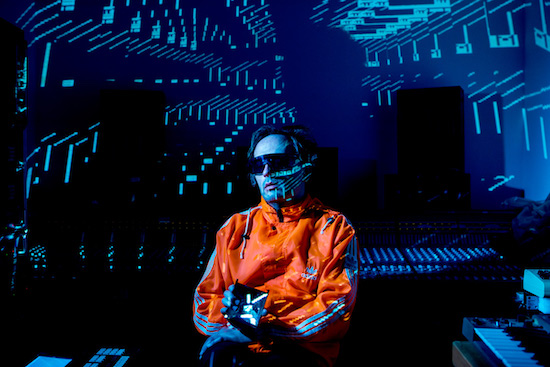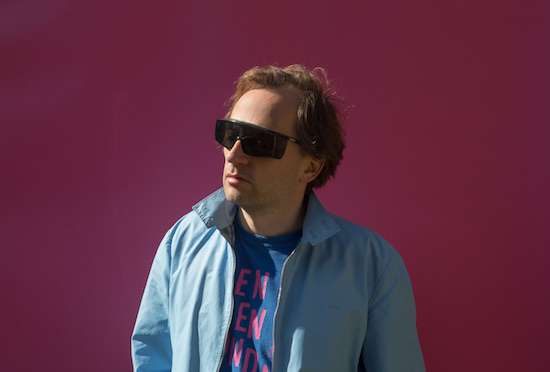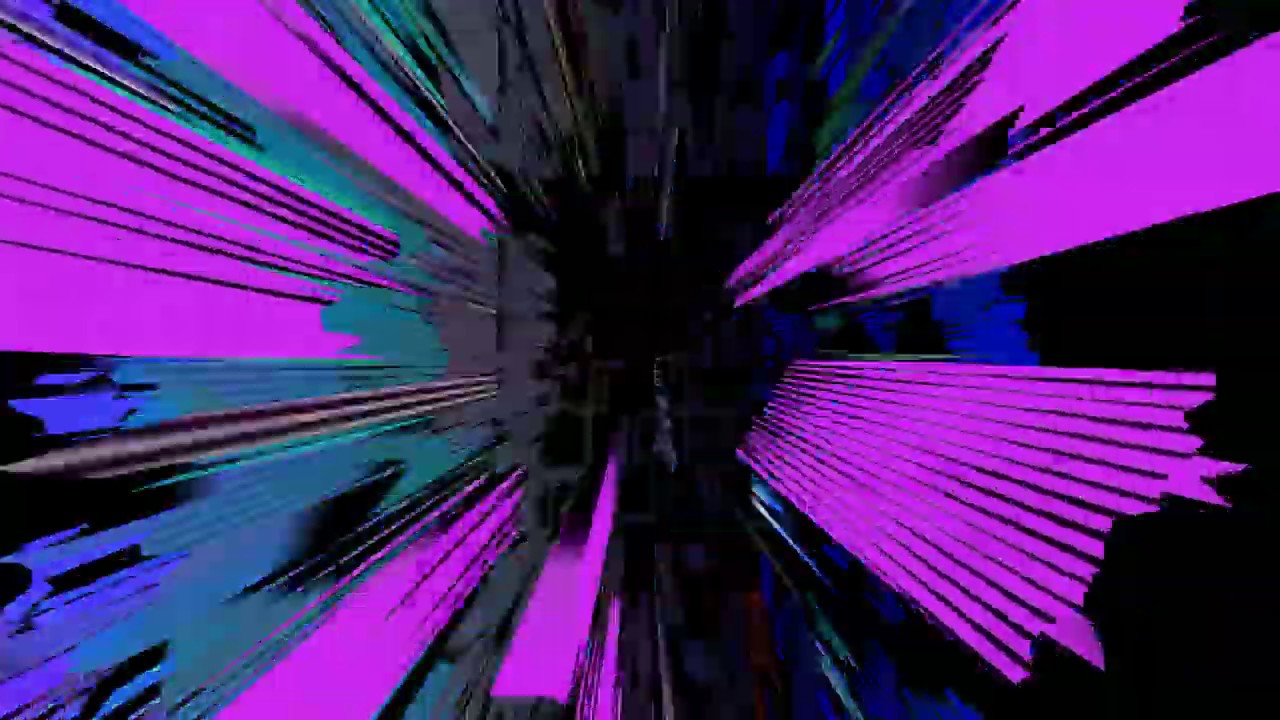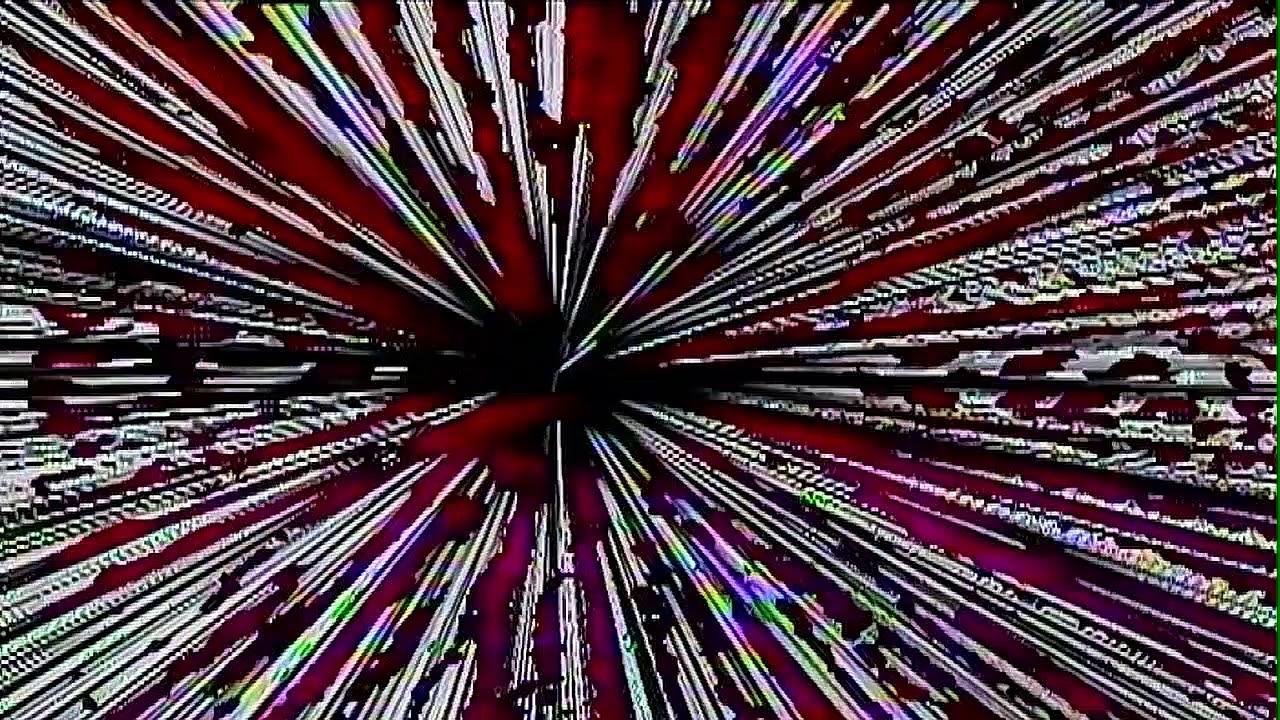Squarepusher portraits by Donald Milne
“The point of the programme was to help children relax, using these quite peaceful and meditative images. Very slow paced”, says Tom Jenkinson, explaining his involvement in a BBC children’s show called Daydreams. I’d asked him what he’d been up to the last few years, and he admits that a programme to help kids unwind and get to sleep was quite a detour from his usual line of work: “I’m not really known for peaceful, meditative music. I think the stereotype of my work is an all-guns-blazing kind of affair”, he says. “I’m fascinated with detail, I thrive on complexity. But at the same time, it felt like a really good challenge for me to try and get some space in”.
This, if anything, is what has remained most consistent in Jenkinson’s work as Squarepusher over the past two and a half decades. At each junction, where journalists might assume they’ve finally got a handle on his dizzying levels of ability as a producer, composer and instrumental player, he abruptly changes direction, fuelled by intense curiosity, a militant dedication to exploring every possible parameter of the tools he uses, and a total refusal to settle down to nice, neat labels. Since the release of his debut Feed Me Weird Things in 1996, he’s produced a further 14 albums as a solo artist, many of which have radically altered the electronic music landscape, taking in fractured jazz, high-octane drum & bass, musique concrète and avant-garde electronic compositions. He’s also regarded by many as one of the world’s best living bass players.
When I meet him at the offices of his PR company in Bethnal Green, he’s in the run up to the release of his new album, Be Up A Hello, his first since 2015’s Damogen Furies. The album came out of a need to “reach for something familiar, something simple, and something that I could do without really thinking”, he tells me. As a result, he turned his attention to the mostly analogue kit that he first starting using as a teenage bedroom producer in the 90s. But this decision was not simply nostalgia for the music of his youth. Rather, the album came about due to unforeseen tragic events which had him revisiting his early years, pondering creative limitations, and reflecting on his relationship with technology.
Be Up A Hello harks back to the manic energy of early Squarepusher releases, partly because most of the tracks were composed in a short space of time, but also because the album was produced under challenging circumstances. “I was out in Norway in January of 2018, slipped on some ice and broke my left wrist”, he explains. “As you can imagine, for someone who plays guitars it was terrifying. Especially when they did the x-ray. They told me that I’d cracked a bone that has a nerve running through it”. Restricted from playing his instruments due to a cast on his arm, and fearing possible long term nerve damage, he was suddenly faced with the possibility of severe restrictions on his creative life and livelihood.
When he got back to his studio, he wanted to produce something purely for enjoyment’s sake. “I was looking for a sense of relief and respite from the distress”, he says. Because of that, he started off with “this extremely flippant mode of writing music”, in which he set out to write a track a day for a month and “wouldn’t get bogged down in more advanced theorising, compositional techniques or programming”. He then developed nine tracks which form the album. While the mode of writing may have been carefree, the music itself is still as complex as multifaceted as ever, from the surprisingly upbeat opener ‘Oberlove’, to the messy and menacing ‘Speedcrank’ and the sparse, ominous, quasi-ambient ‘80 Undula’.
When I ask him about the title of the album, he becomes a little more reflective: “I can’t really explain it for you. We had all our own phrases, me and my posse of mates when we were teenagers. It’s kind of like ‘big up’, you know?”. Among his friendship group was someone called Chris Marshall. “We went to school together. I got to know him when I was 16 or so”, he says. “He and I were great friends. We used to mess about with synths early on, when I was just getting into that stuff. He was a very technically-minded guy, so he and I tried to learn about how samplers worked, the ideas that form the basis of synthesisers, how it all hangs together.”
Two months after Jenkinson broke his wrist in Norway, he received the terrible news that Marshall had died suddenly and unexpectedly, in his mid-forties. “It was another order of magnitude”, he says solemnly. “It was a tragedy.” Experiencing these two traumatic life experiences so close together left Jenkinson feeling overwhelmed and “a bit punch-drunk”. Yet not only did writing Be Up A Hello provide an immediate sense of therapy after the loss of one of his closest childhood friends, it also became a celebration of the the friends and circumstances that had pushed him towards music in the first place.
As a young person exploring synths and drum machines in his bedroom in Chelmsford, Essex, music was primarily a hobby. “I didn’t have any sense that I would have a career in music when I was 16, 17”, he tells me. “I really didn’t even want it. I thought I’d become a scientist. Physics was my strong subject at school”. It was an early interest in the mechanical properties of music equipment that acted as a gateway. “One of my first fascinations as a kid was electronics. I had this sense that a circuit had a form of life: current moves around a circuit and it causes certain things to occur. And you use components to change the character of that electrical flow, make it do different things.”
Rather than teachers or parents, it was a group of “music rebels” at his school who really helped cement his fascination with the more complex dimensions of sound. “I did have the good fortune of going to school with a guitar player called Guthrie Govan, who’s quite simply one of the best guitarists in the world. Even when he was 14, he was absolutely outstanding. It was riveting to watch him play. The standard was immediately set so high."
While this encounter with Govan had sparked an interest in acquiring technical mastery, other friends were introducing him to new worlds. “There’s another character in the group of friends at this point, called Hardy. He had hundreds of Detroit and Chicago rarities. So he was a big influence on what we were listening to. It’s through him that I’d learnt about Detroit techno and acid house, which really influenced me a lot.” Soon he and his friends were putting on parties in each other’s houses. “I’ve got some photographs that I uncovered recently, with a load of analogue kit and turntables set up on a kitchen table. We’d just hire a smoke machine, fill up the ground floor of someone’s house with smoke and play banging music."
Marshall proved to be key in cementing his interests: “By the time Chris and I were hanging out, there was a sense of how these worlds might collide, how electronics and guitar can be combined into other things.” All of this remained creative exploration for its own sake, until 1995, when Warp Records sent him a contract. He was still only 20 at this point, and had only just starting experimenting with live sets of his electronic shows. “The first actual electronic performance I gave in a club” was at Turnmills in Clerkenwell in 1994. “I was doing a live show based on that music. That was when I was starting to get into events that were more organised and official.” It wasn’t long before he’d built a reputation as one of the most exciting artists working in the UK.

Alongside these early experiences, underlying conflicts between polarities in Jenkinson’s temperament have always influenced his output. “I didn’t get any help from the music department at school. In fact, I felt more or less at odds with them. They’d given me this sort of rebel mentality, that I’m always fighting against someone”. These battles are now largely internal, but remain a key part of his creative process. He gives the example of his Solo Electric Bass record, which was, he says, “a battle between, on the one hand, a punk aesthetic, a stripped down, straightforward way of making things”, and on the other, a “fascination with technique, the way that great technique is like a great vocabulary.” But he’s also aware that music based on technique for its own sake can become “elitist and self-referential”. This is part of the reason he’s so reluctant to be pigeon-holed: “I don’t want any kind of bracket to spring up around my work. As much as there are various forces which strive to pull us apart, music, naive as it may sound, is one of the things where we can genuinely unite and enjoy ourselves together.”
As well as being interested in how music can dissolve social boundaries, he’s driven by a desire to
eliminate any latency between his musical ideas and their creative expression. For Damogen Furies, he built his own software from scratch in order to do this. But Be Up A Hello relies mostly on exploring the limits of analogue equipment. We talk about the comparative ease of making electronic music in today’s world, with the proliferation of software such as Logic, Ableton Live and Reason, a situation which is very different to 25 years ago. “It’s so different to the days when there was a scarcity of musical means. Everything was determined by money”, he says. “When I started out, you had to save up months or years of pocket money, or money from odd jobs, to buy just one drum machine”. But there is, for him, a positive side to this scarcity: “I think the good thing about that is that it really makes you value things. You have a very visceral sense of wanting to get the very best out of what you’ve got. Because what you’ve got in front of you is very limited.” Learning to make music in this way produced a “really hard-headed, brutal outlook on instruments – I have to know them inside out.”
This hard-headedness applies equally to the visual component of his live shows, which are often as intense as his music. He’s somewhat scornful of the recent tendency, noted in a piece by
Simon Reynolds for electronic musicians to try and outdo each other in an effort to produce the most spectacular show, now that so much of a musician’s income is dependent on festival appearances rather than album sales. “I think what happens is that there’s a bit of keeping up with the Joneses”, he says. “The ‘arms race’ fundamentally boils down to a consumerist mentality: we’ve bought the kit, and that makes us good. It’s not a far extrapolation from consumer capitalism.”
Having worked closely over the years with visionaries such as Chris Cunningham, who produced the freaky, nightmarish video for ‘Come On My Selector’, Jenkinson has a strong sense that visuals should directly complement the music. When the two worker together, Cunningham “was trying to digest this quite complex, technical musical event into a picture. Basically translating it into a more readily understood language.” He feels that contemporary audiovisual shows sometimes do the opposite. “It’s actually just a distraction, [the visuals] are there because people feel they need to be there, not because anyone has thought about it, or anyone feels that there’s a direct connection between the picture and the sound.”
Whether it comes to visuals or sound, this refusal to bow to trends means that Squarepusher’s music will always veer off on to uncanny trajectories. “I haven’t really got a careerist bone in my body. I don’t know what I’m going to be doing from one day to the next.” He is still guided by fundamentally the same impulses that drove him as a teenager, a determination to explore his own interests, wherever they may lead. “Maybe one day it’ll form the end of my career because all the choices I make suddenly make no sense to the public and everyone gives up on me. But I haven’t really got any other way to do it.”
Be Up A Hello is released on Warp Records on 31 January. Squarepusher plays Berghain as part of this year’s CTM Festival on the album release date – for more information about the performance and the rest of CTM, please visit the festival website




